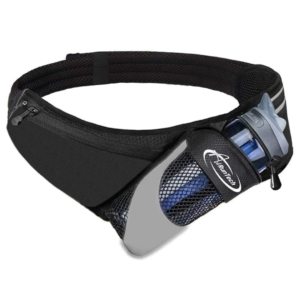Competing in the Kerrville Tri 2024 is an exciting challenge that demands peak performance across swimming, biking, and running. Among these, biking is a critical segment where you can gain a significant edge by increasing your mileage. Whether you’re a seasoned triathlete or a newcomer, the right approach to boosting your bike mileage can make a world of difference. Let’s dive into effective strategies to prepare your legs and lungs for those extra miles!
 Set Realistic Goals
Set Realistic Goals
Before you start ramping up your mileage, it’s essential to set realistic and achievable goals. Assess your current fitness level and determine a target mileage that you can gradually build up to without risking injury. Break down your ultimate goal into weekly or monthly increments to maintain steady progress.
Build a Structured Training Plan
A structured training plan is the backbone of increasing your bike mileage. Consider incorporating the following elements:
- Base Miles: Start with a solid foundation of base miles. These are longer, steady rides at a comfortable pace to build endurance.
- Interval Training: Integrate interval training sessions to improve your speed and power. Alternate between high-intensity bursts and recovery periods.
- Long Rides: Dedicate one day a week to a long ride that gradually increases in distance. This simulates race conditions and enhances stamina.
- Recovery: Allow adequate recovery time to prevent burnout and overtraining. Include rest days and light recovery rides in your plan.
 Focus on Nutrition and Hydration
Focus on Nutrition and Hydration
Fueling your body properly is crucial for sustaining longer rides. Prioritize a balanced diet rich in carbohydrates, proteins, and healthy fats. Stay hydrated before, during, and after your rides. Consider using sports drinks or gels for longer sessions to replenish electrolytes and energy.
Invest in Quality Gear
The right gear can significantly impact your performance and comfort. Ensure your bike is well-maintained and fits you correctly. Invest in quality cycling shorts, shoes, and a helmet. Aerodynamic gear and accessories, such as a bike computer, can also help monitor your progress and enhance your training efficiency.
 Incorporate Cross-Training
Incorporate Cross-Training
While biking is the focus, incorporating cross-training activities like swimming, running, and strength training can boost overall fitness and prevent monotony. Strengthening your core and leg muscles through targeted exercises will improve your cycling power and endurance.
Join a Cycling Group
Cycling with a group can provide motivation, support, and valuable tips from experienced riders. Group rides often push you to ride longer and faster than you might on your own. Plus, the camaraderie and shared experiences make training more enjoyable. Try our sponsor and favorite bike store Bicycle House for their Saturday morning group ride at 8AM.
 Monitor Your Progress
Monitor Your Progress
Keep track of your mileage, speed, and overall progress using apps or a training log. Regularly reviewing your performance data helps identify areas for improvement and celebrate milestones. Adjust your training plan as needed based on your progress and any challenges you encounter.
Listen to Your Body
Pay attention to your body’s signals. If you experience pain or fatigue, it may be a sign to take a break or adjust your training intensity. Pushing through pain can lead to injury, derailing your progress.
Increasing your bike mileage for the Kerrville Tri 2024 requires a balanced approach of consistent training, proper nutrition, quality gear, and mindful recovery. By setting realistic goals and following a structured plan, you’ll be well on your way to conquering the bike segment of the triathlon and achieving your personal best.






 2. Barton Creek Greenbelt
2. Barton Creek Greenbelt 3. Southern Walnut Creek Trail
3. Southern Walnut Creek Trail 4. Veloway
4. Veloway 5. Brushy Creek Regional Trail
5. Brushy Creek Regional Trail